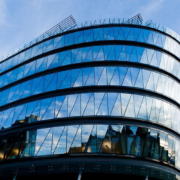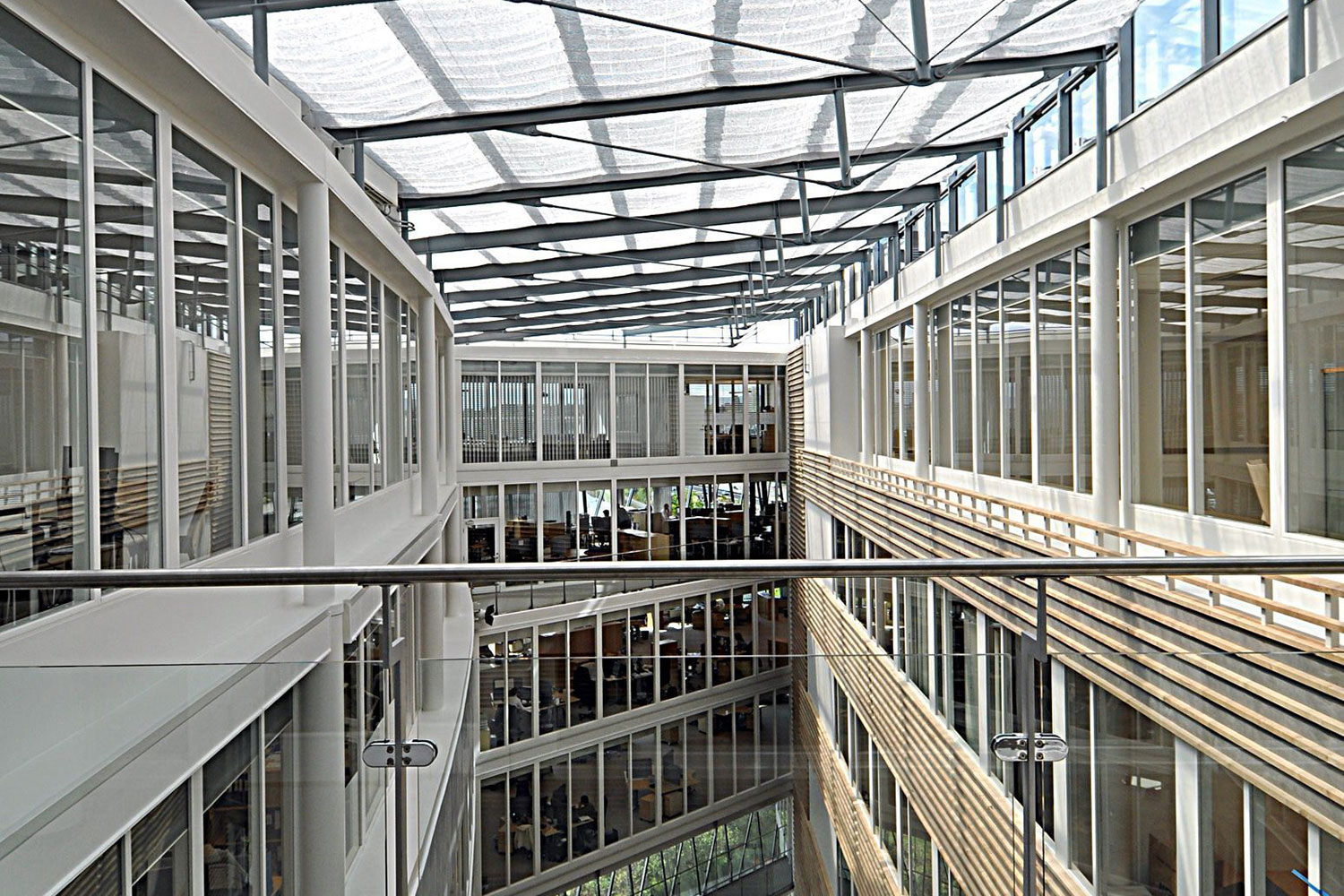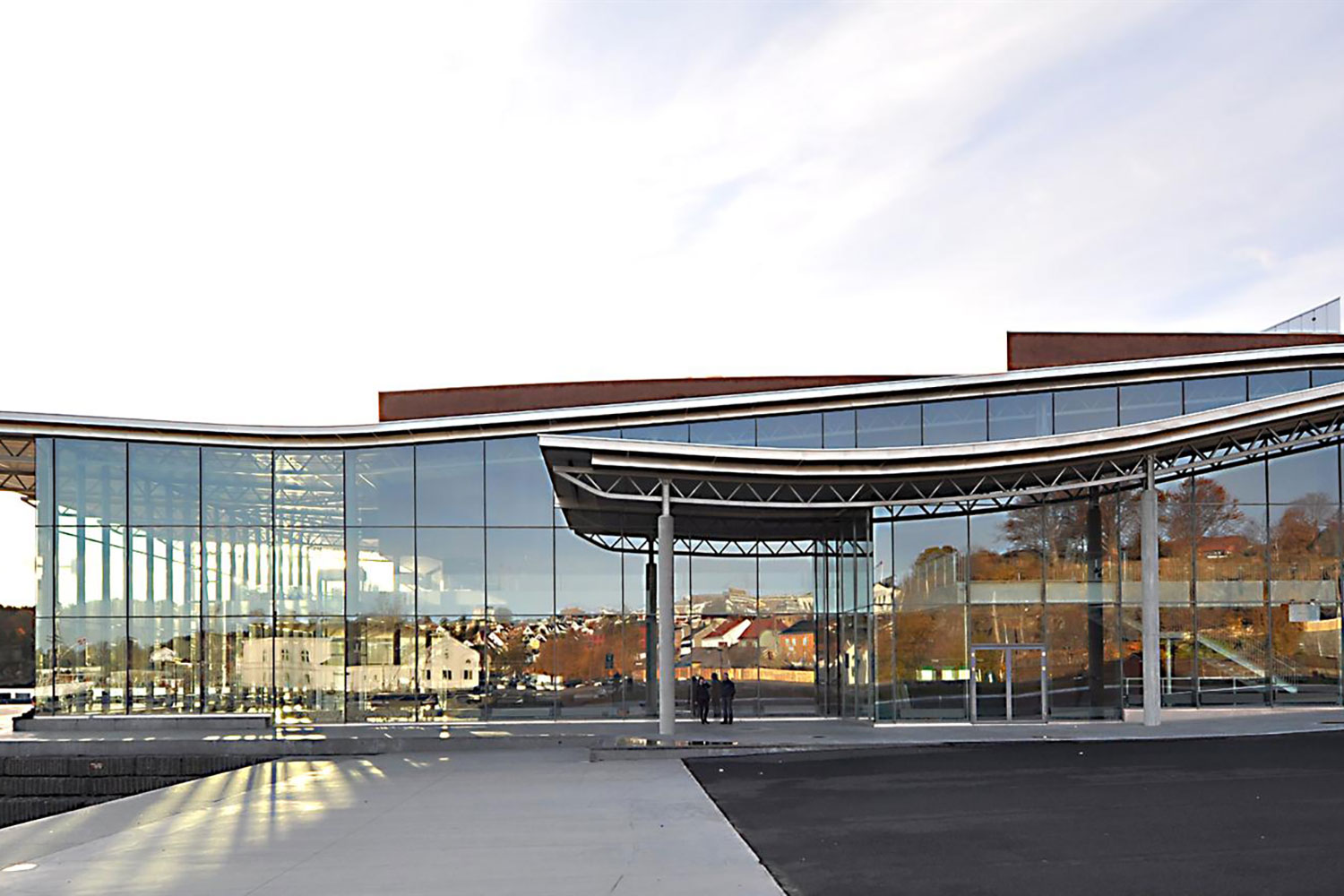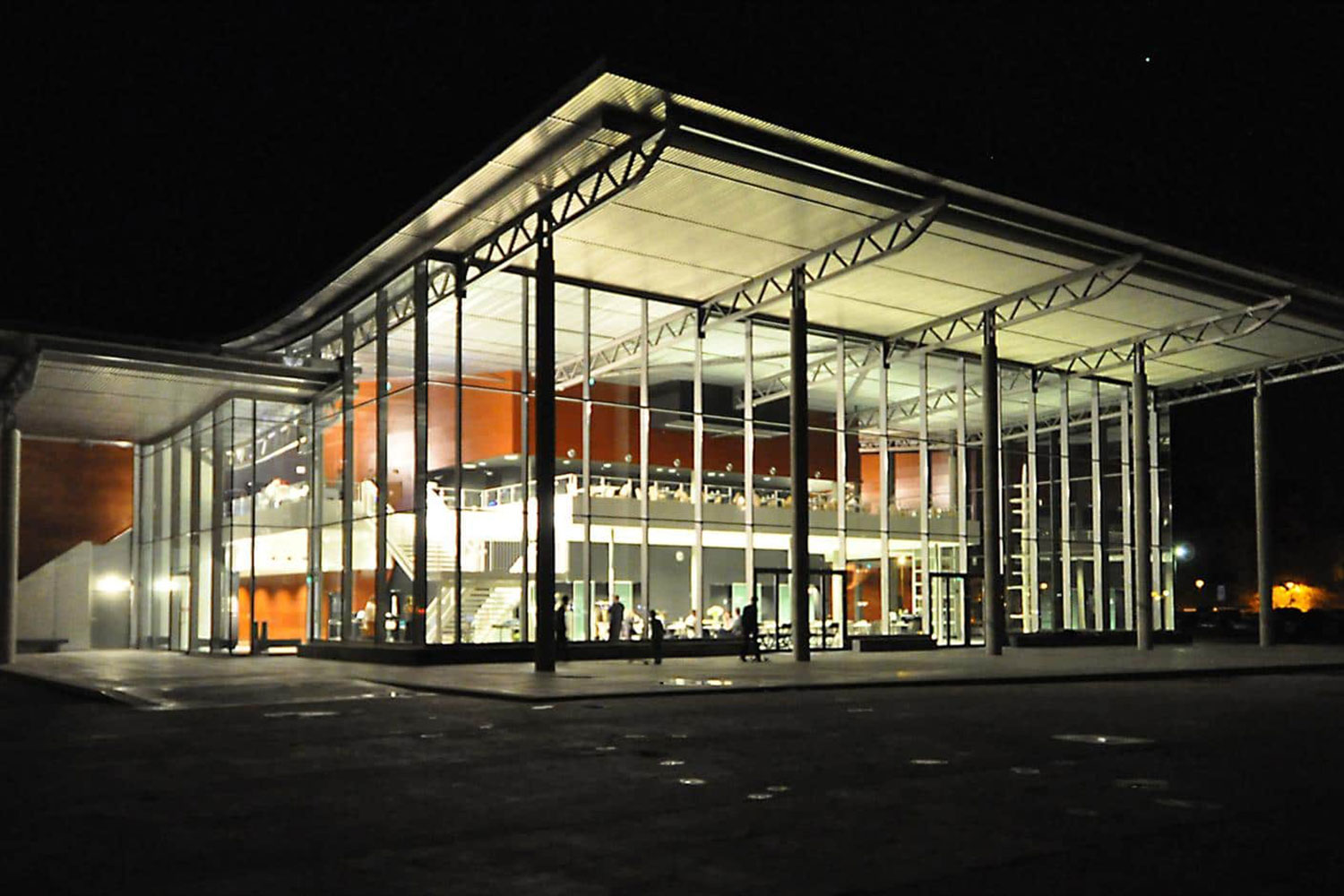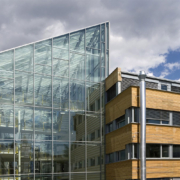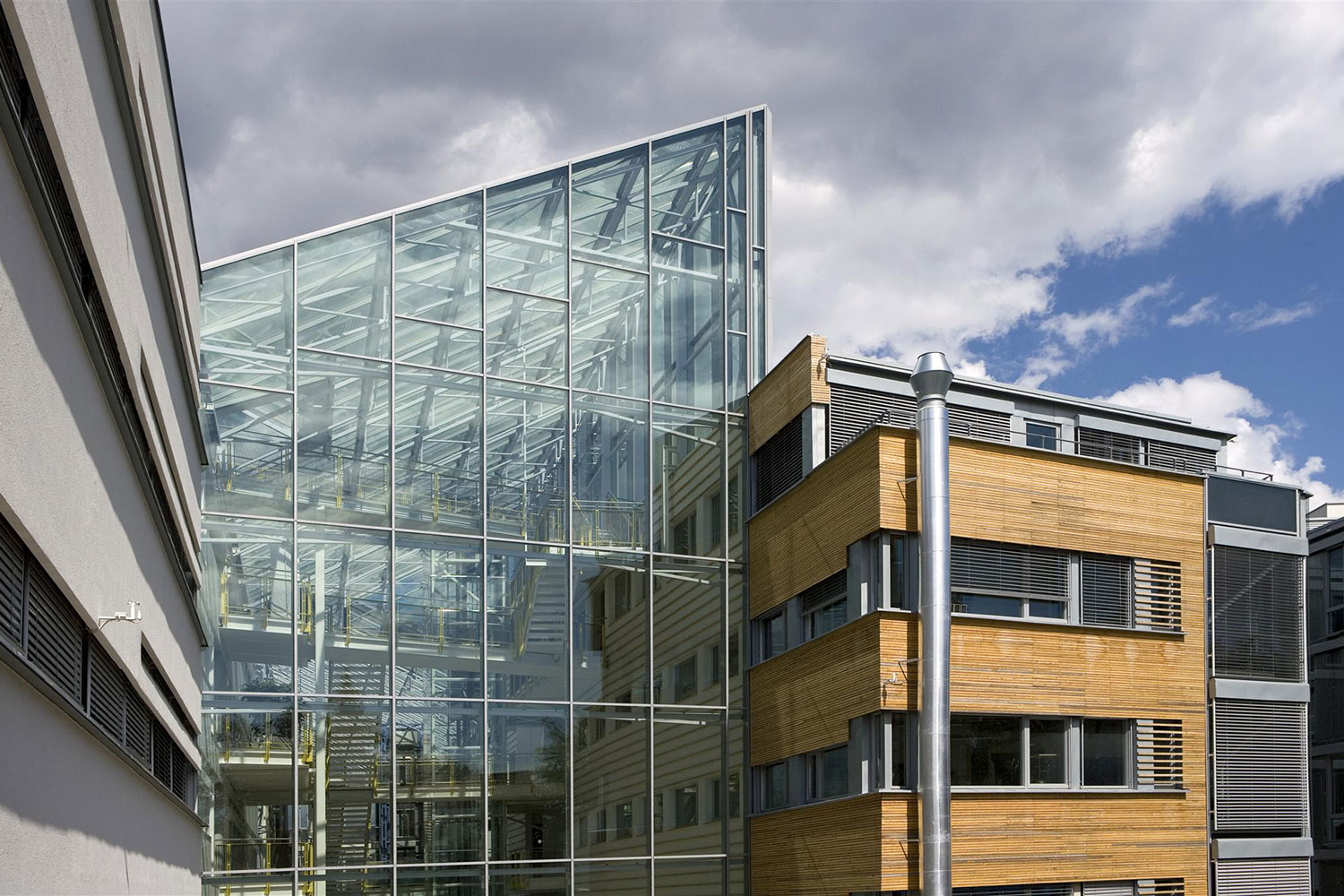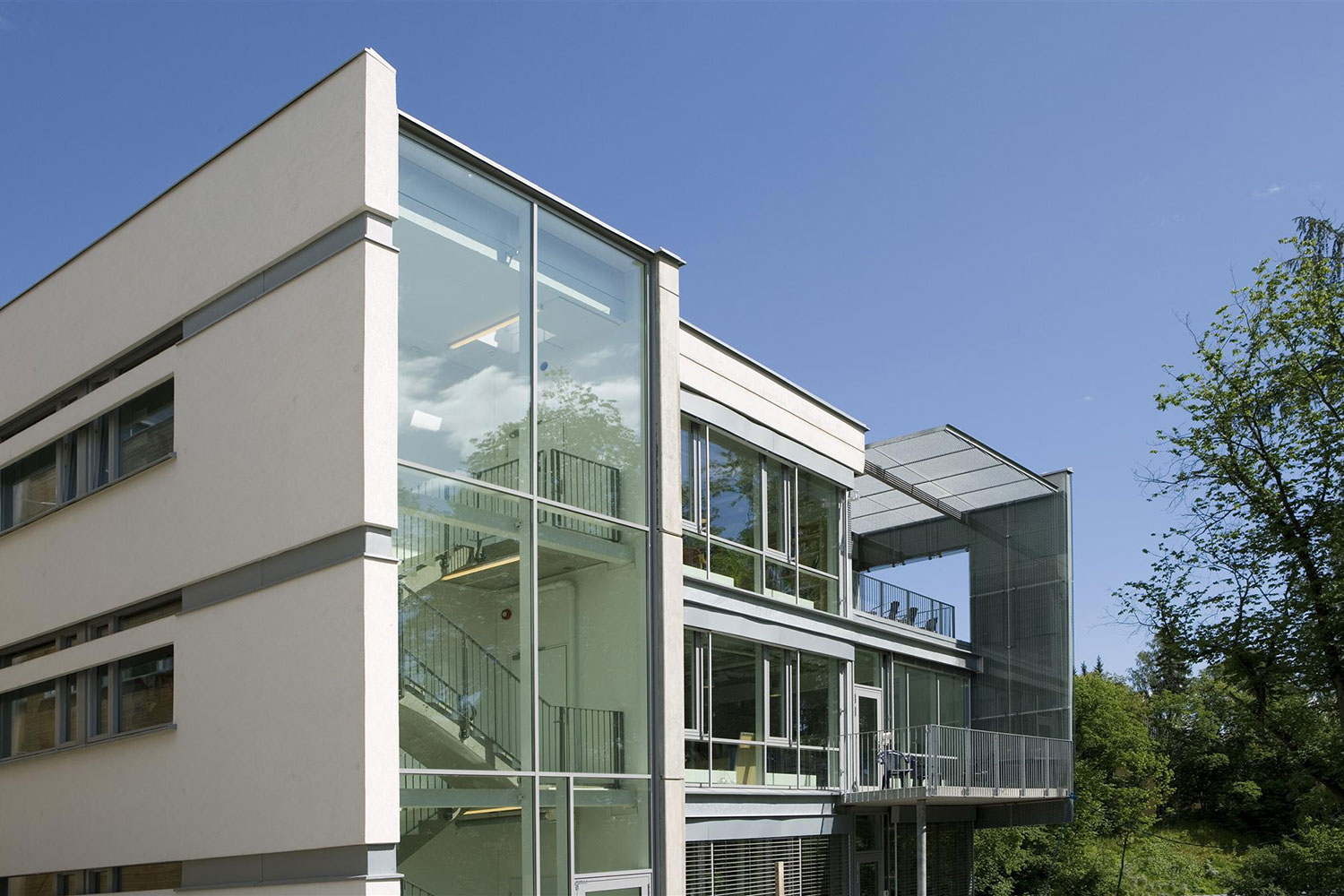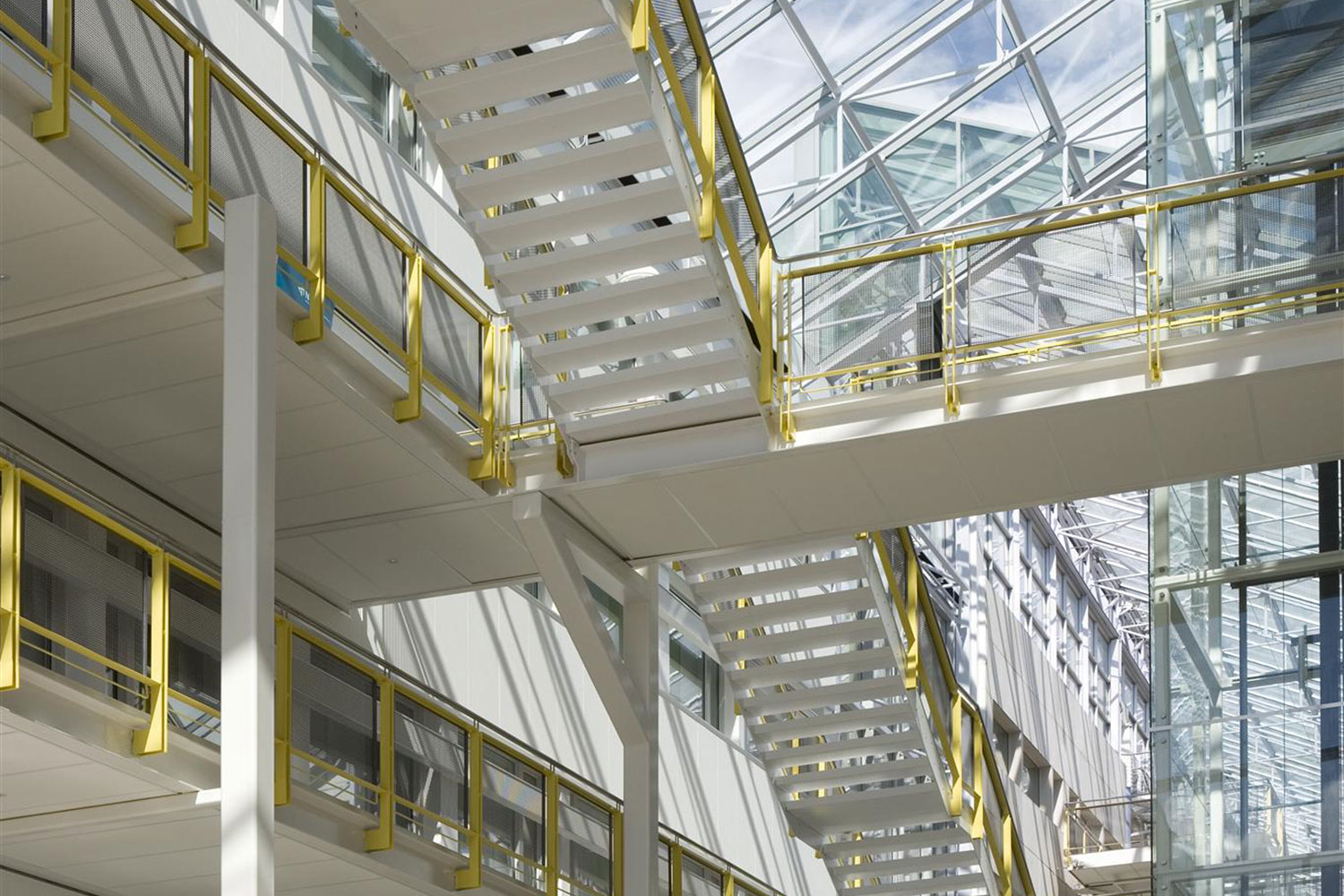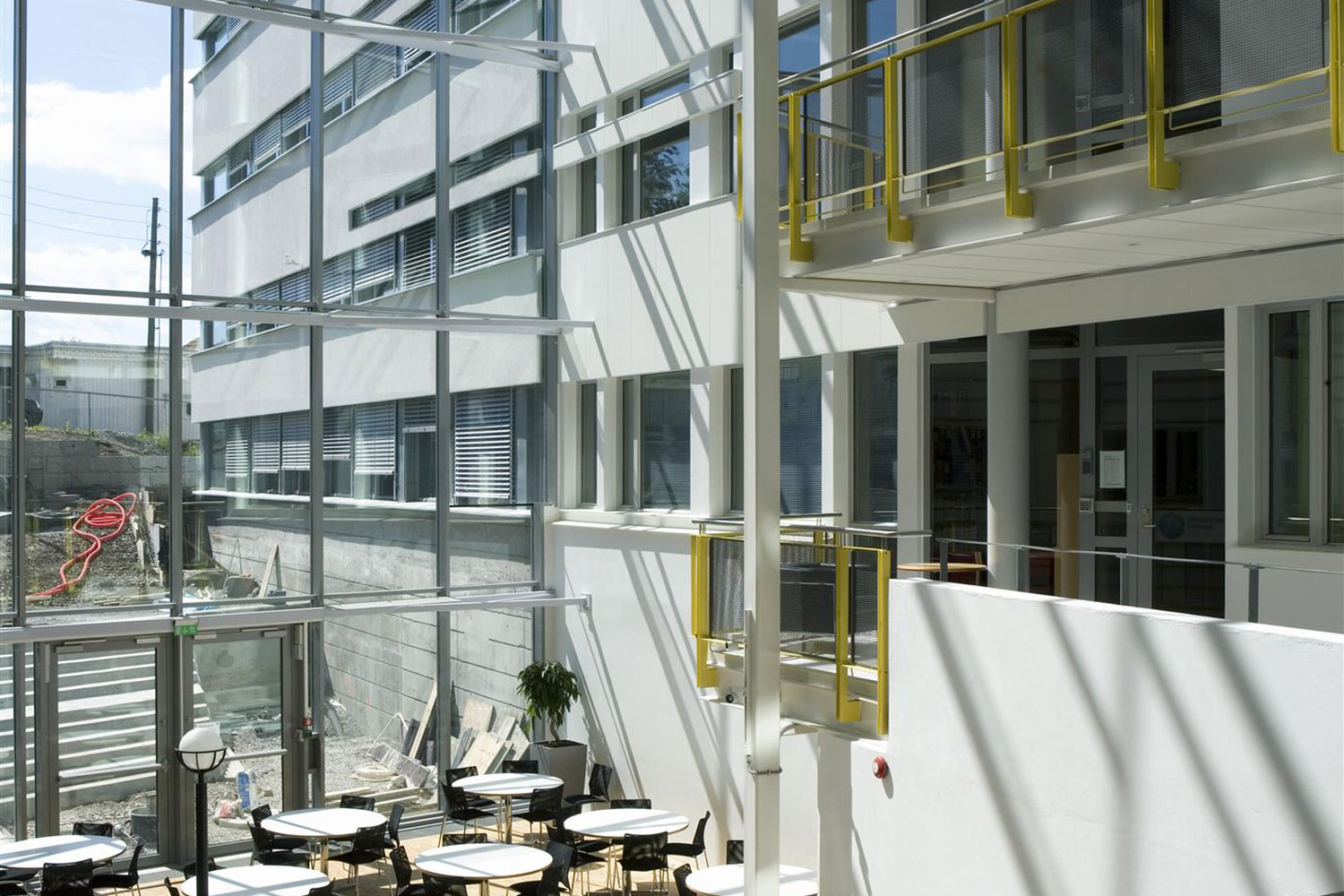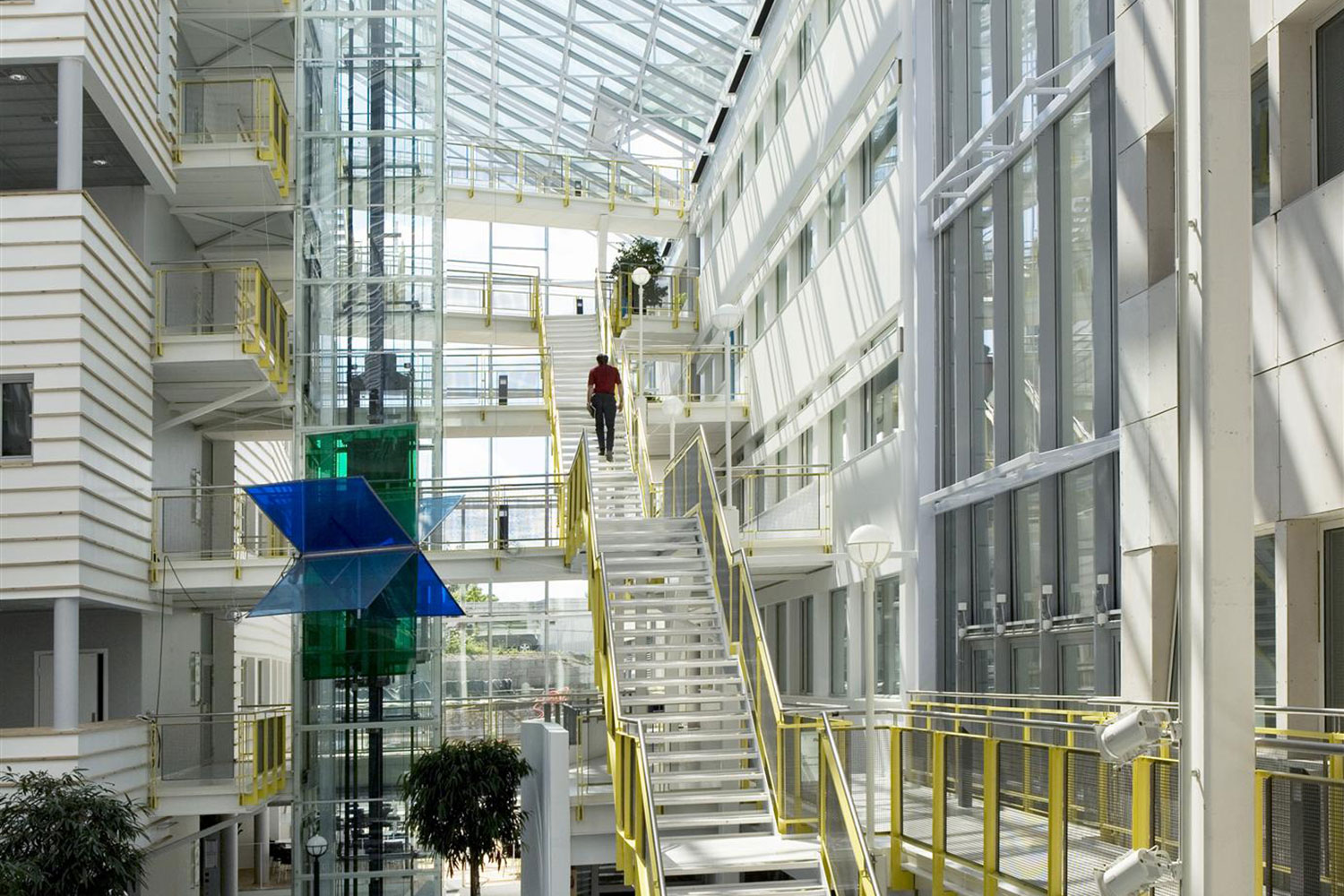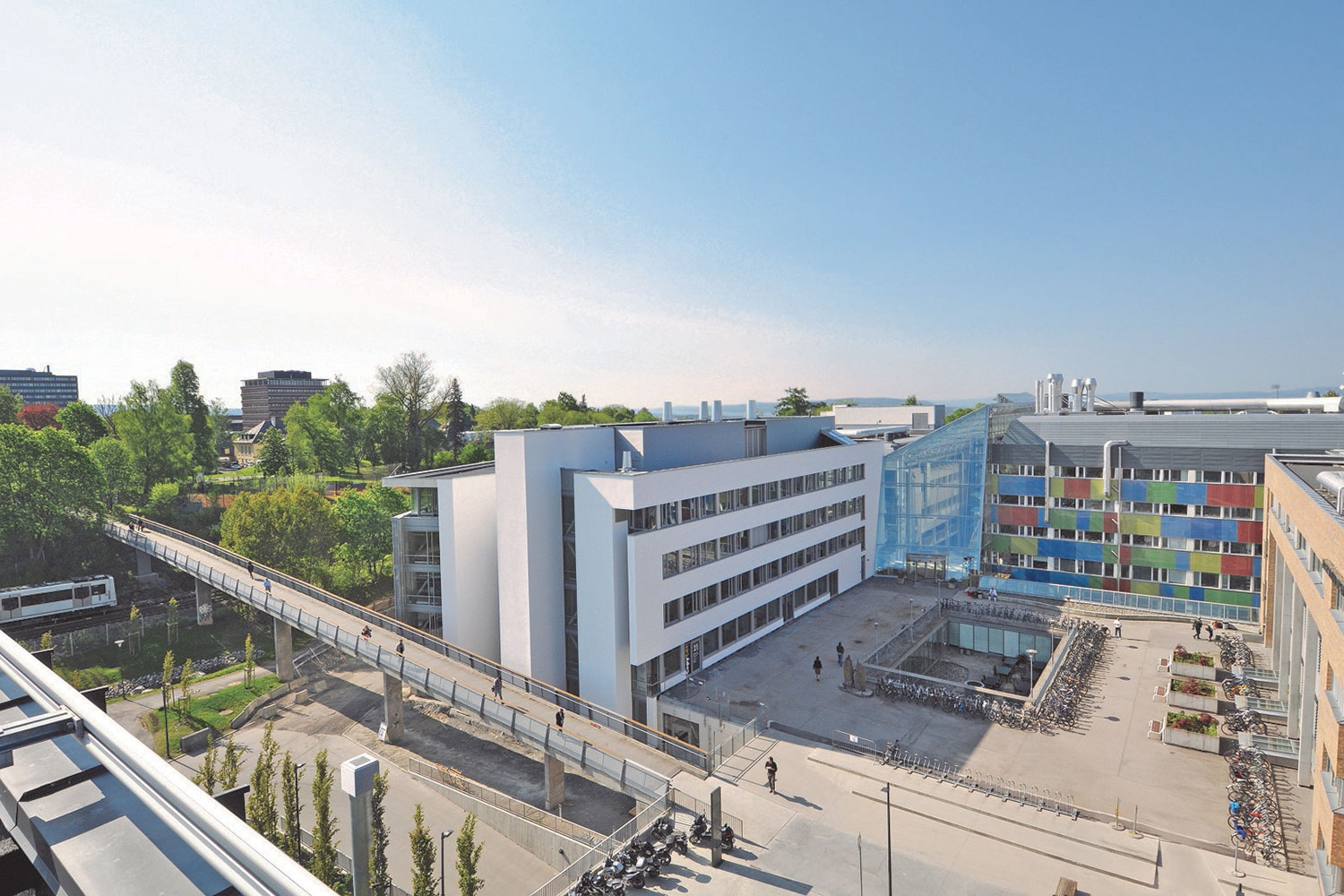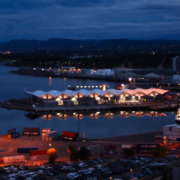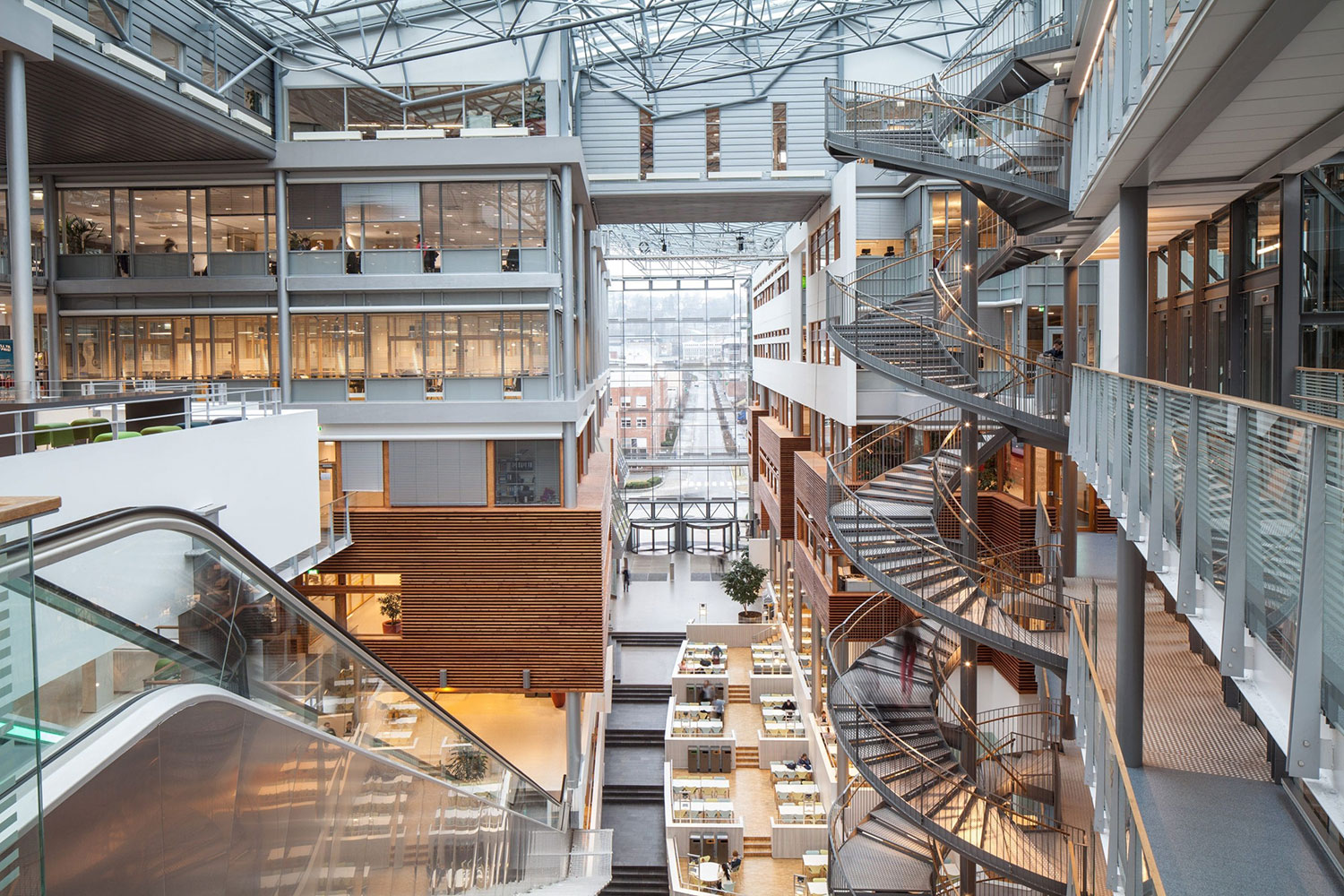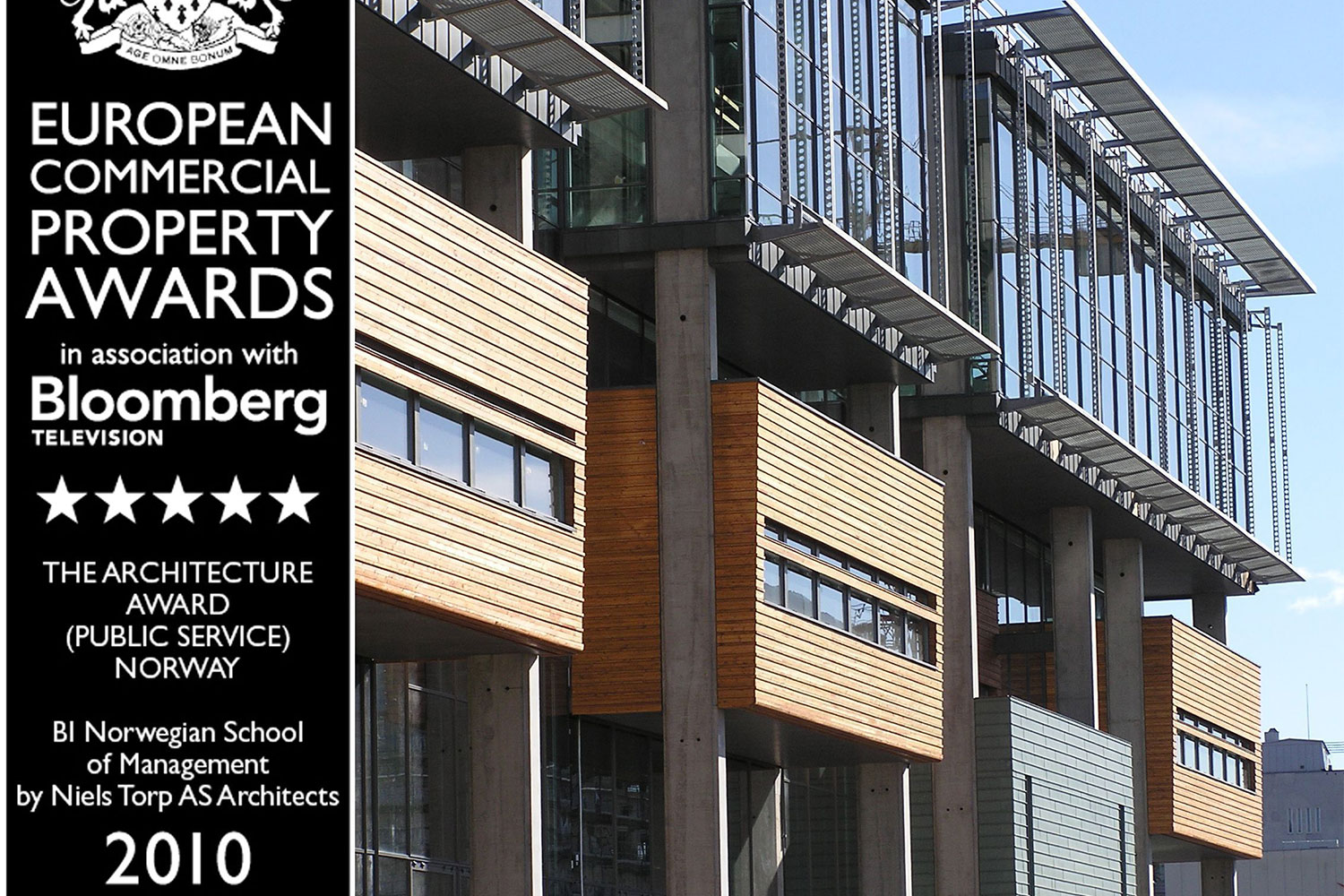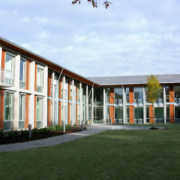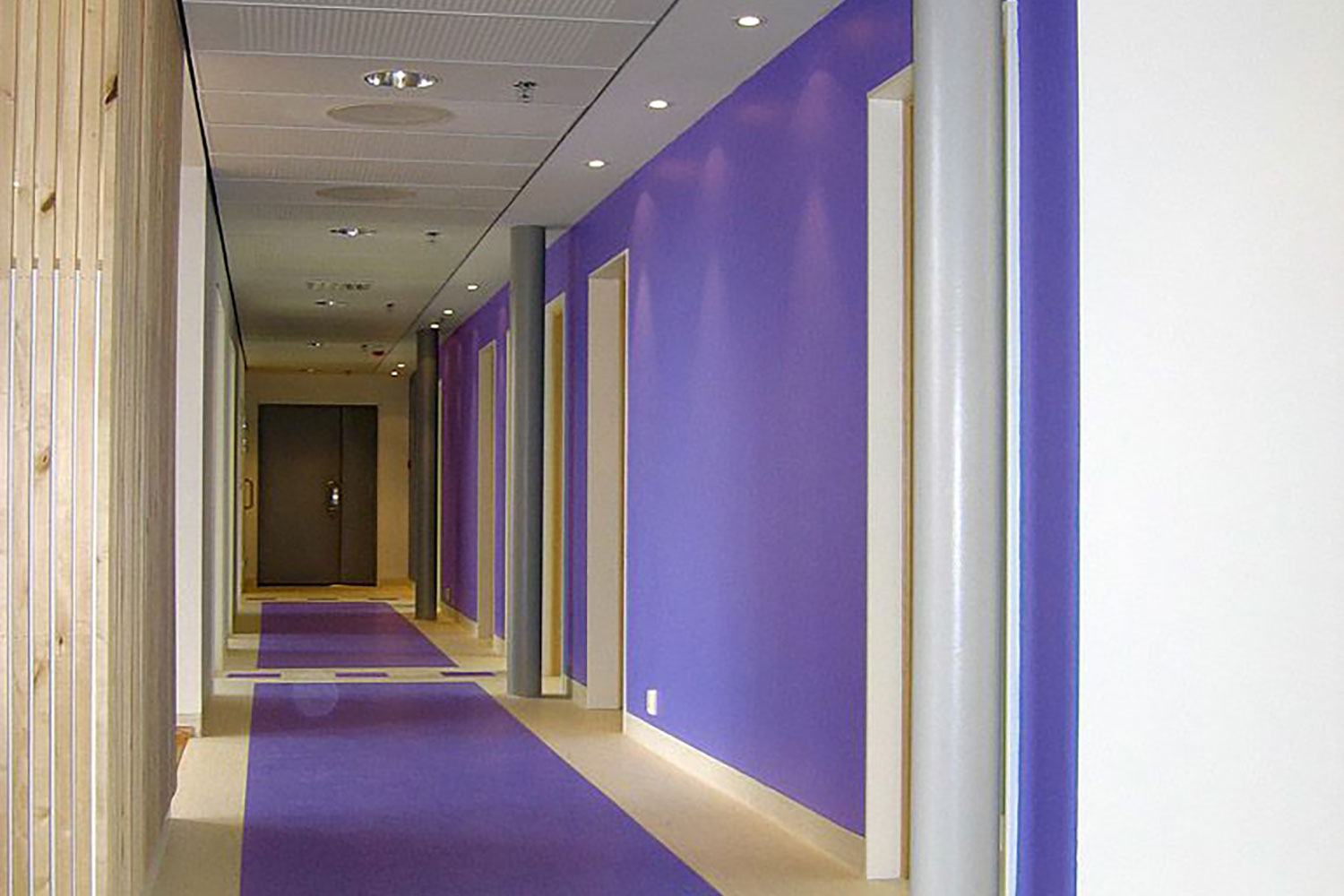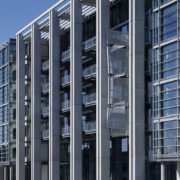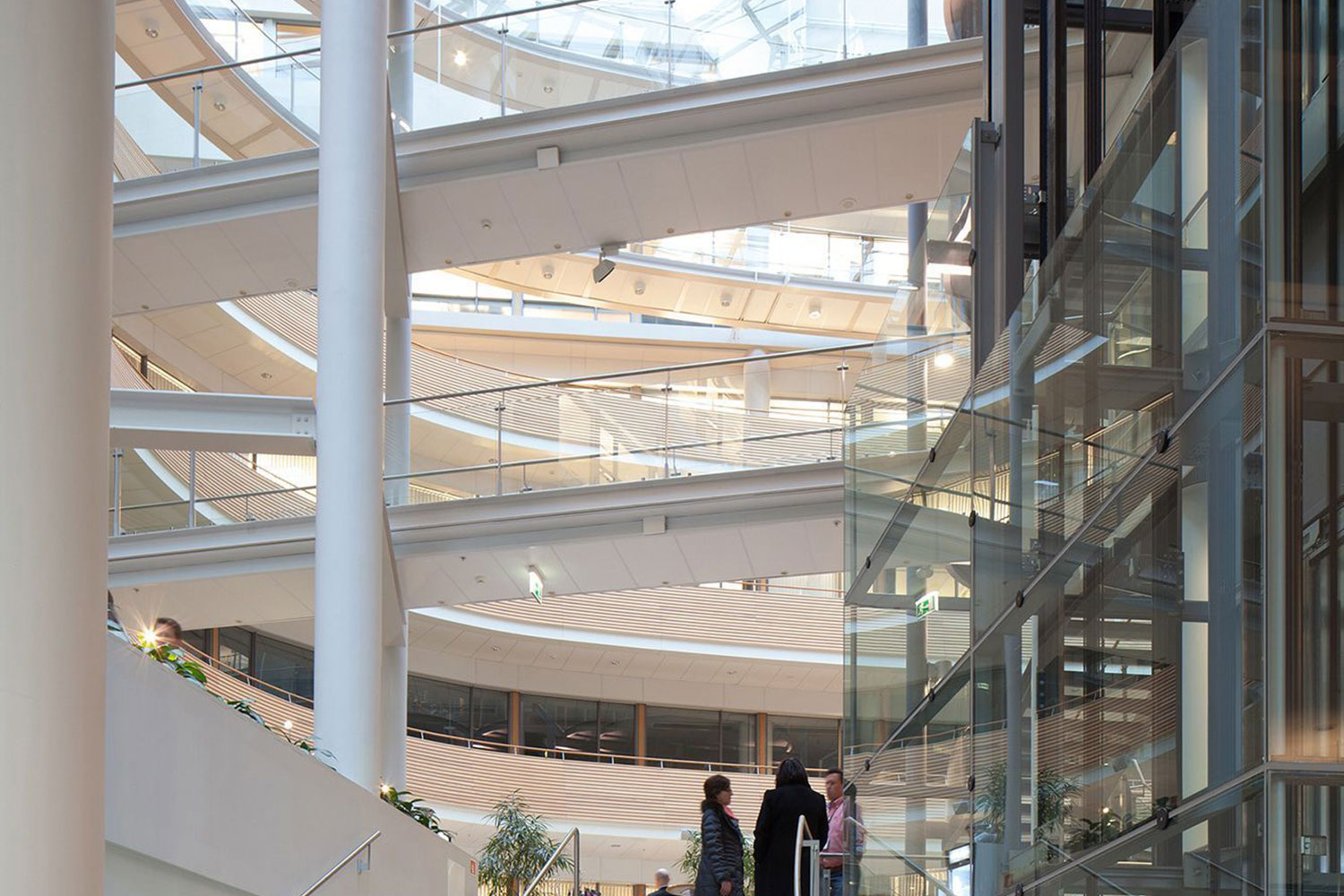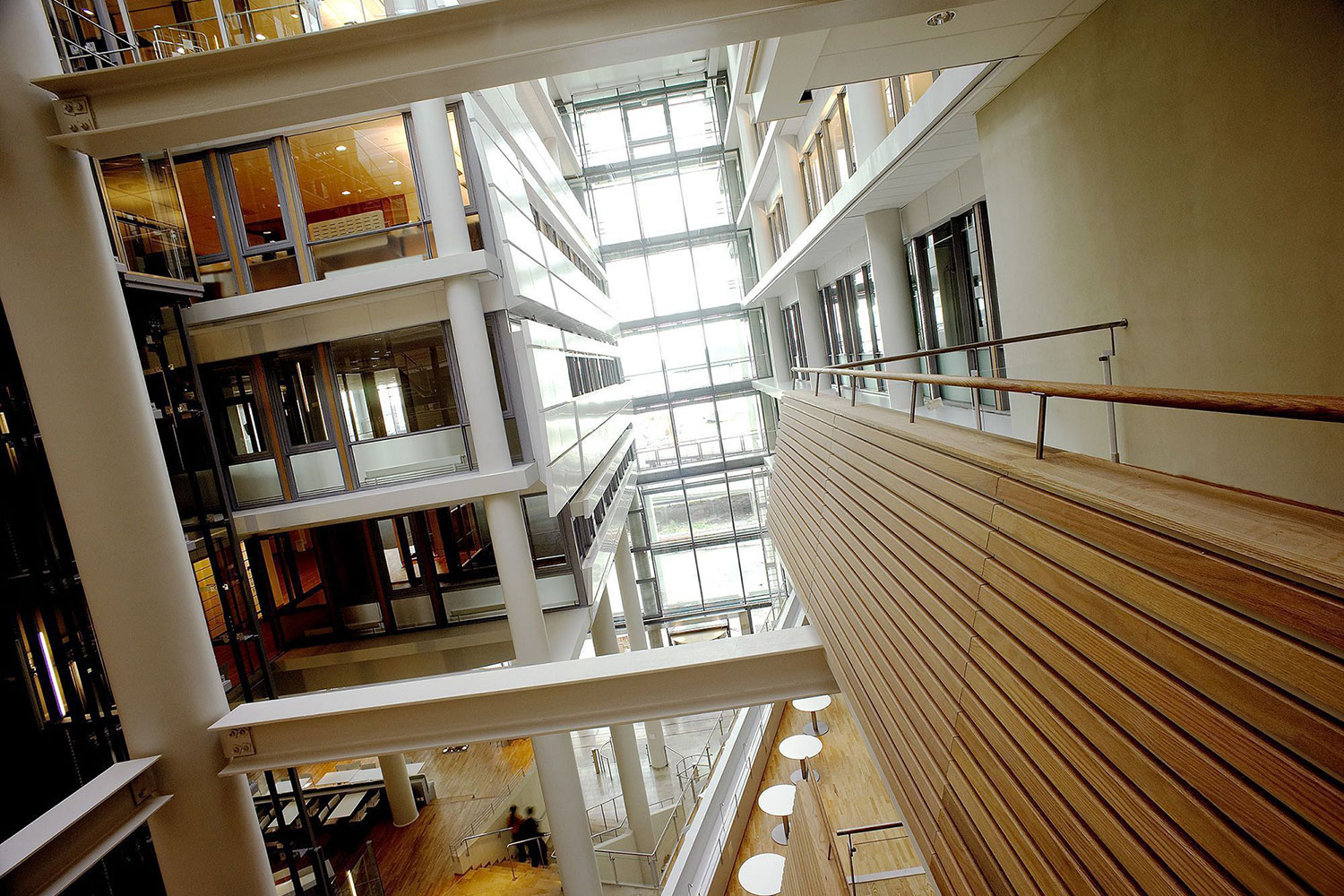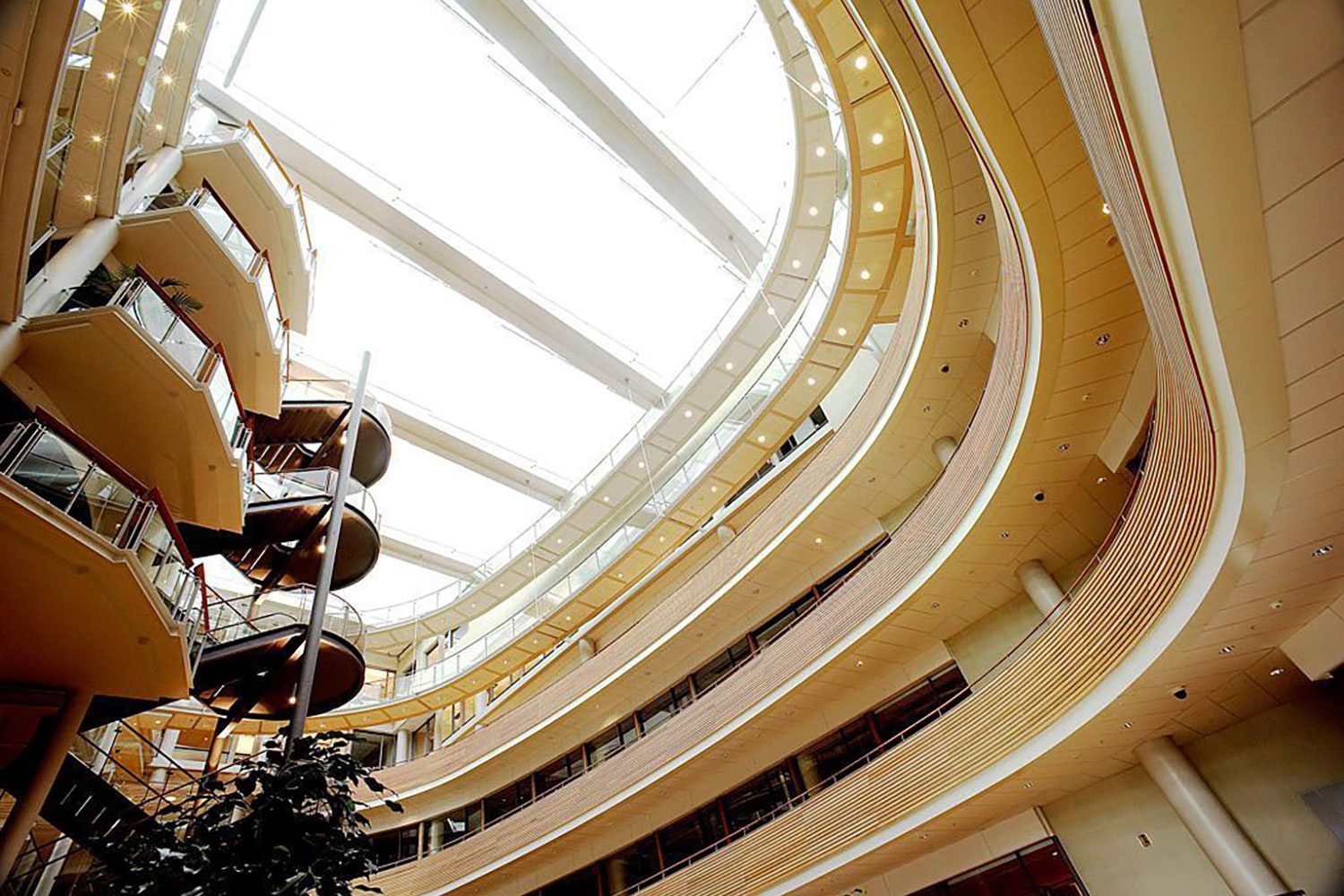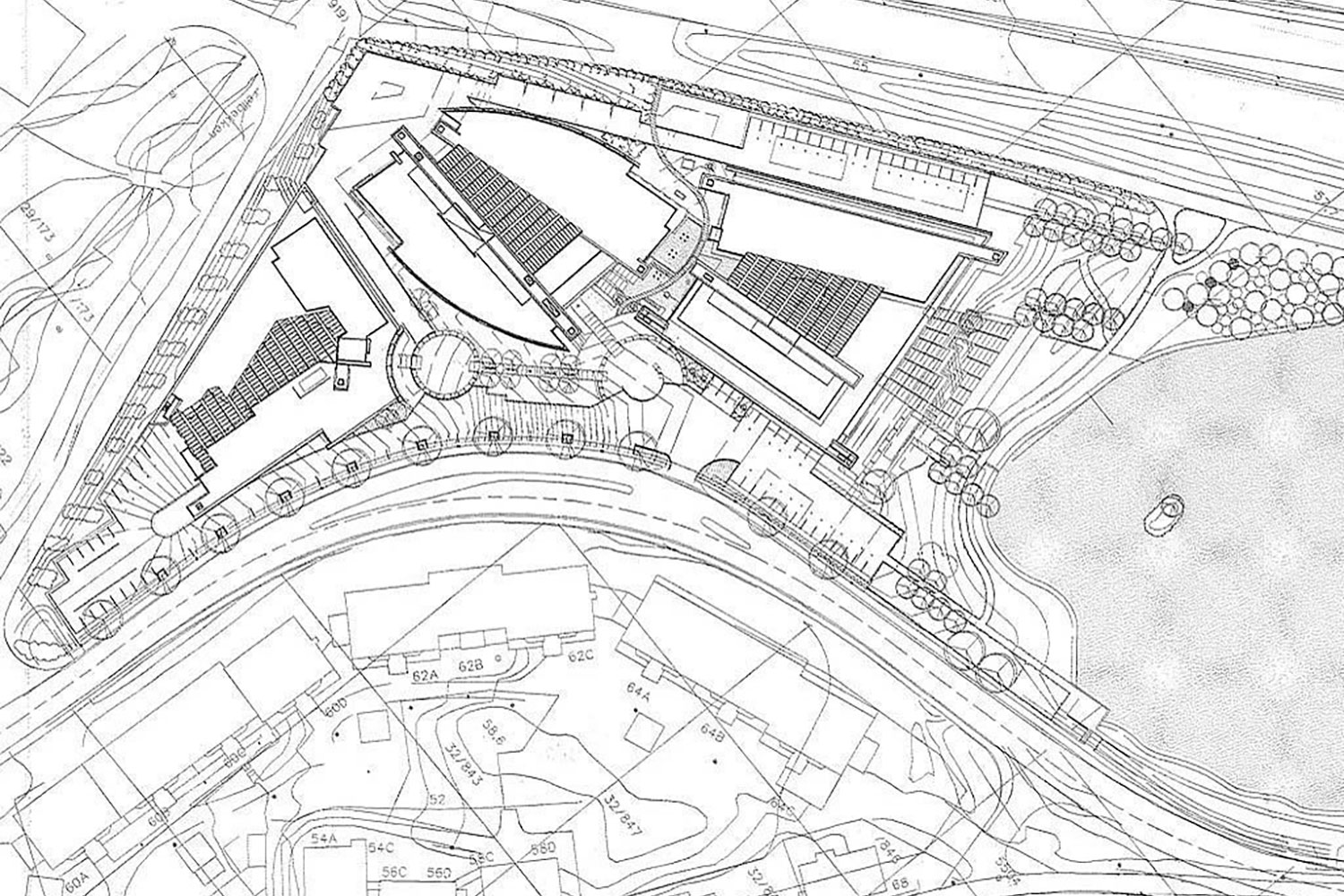The Soloist, Belfast
/i Næring /av Shiraz RafiqiThe Soloist, Belfast
Lokasjon
Belfast, Ireland
Størrelse
10.500m²
Oppdragsgiver
William Ewart Properties / Patton Construction
År
2010
The Soloist – No 2 Lanyon Place – Belfast
Lanyon Place-utviklingen er en av arvene fra Lagonside Corporation, som ble opprettet på 1980-tallet for å gjennomføre regenereringen langs breddene av elven Lagon. Området No 2 Lanyon Place har blitt definert av masterplanen for Lanyon Place som er blitt implementert av Lagonside Corporation, med Waterfront Hall som sitt sentrale punkt.
No 2 Lanyon Place er plassert ved hovedkjøretilgangen til Lanyon Place. Det er begrenset i sør av May Street og i vest av Oxford Street, med utsikt mot Royal Courts of Justice. I øst grenser området til Waterfront Hall og dens fotgjengerplass, og i nord adresserer området plassen og elven Lagon, med utsikt mot krysset med Chichester St.

Oppgaven var å skape en landemerkebygning som komplementerer Waterfront Hall og etablerer en inngang til det samlede Lanyon Place-området.
Designet er utviklet for å forbedre fotgjengerforbindelsene gjennom området og skjerme området fra sørvestlige vinder.
Bygningen består av fem etasjer med innkvartering, med et maskinrom på taket. Som definert av masterplanen for Lanyon Place, linjer takhøyden seg med parapeten til Waterfront Hall.
Med et areal på 10 500 m², er det foreslått at første etasje vil bestå av kommersiell eller blandet bruk, mens de øvre etasjene vil bestå av kontorbruk av kategori A. Bygningen sitter på hver side av en arkade som skjærer gjennom bygningen på en nordøst-sørvest-akse, og skaper en fotgjengerrute fra St. Georges Market til inngangen til Waterfront Hall. Det er tenkt at arkaden vil bli ‘hjertet’ i bygningen som inneholder innganger til kontorer og muligens kantet med kafeer, bistroer og gallerier osv.



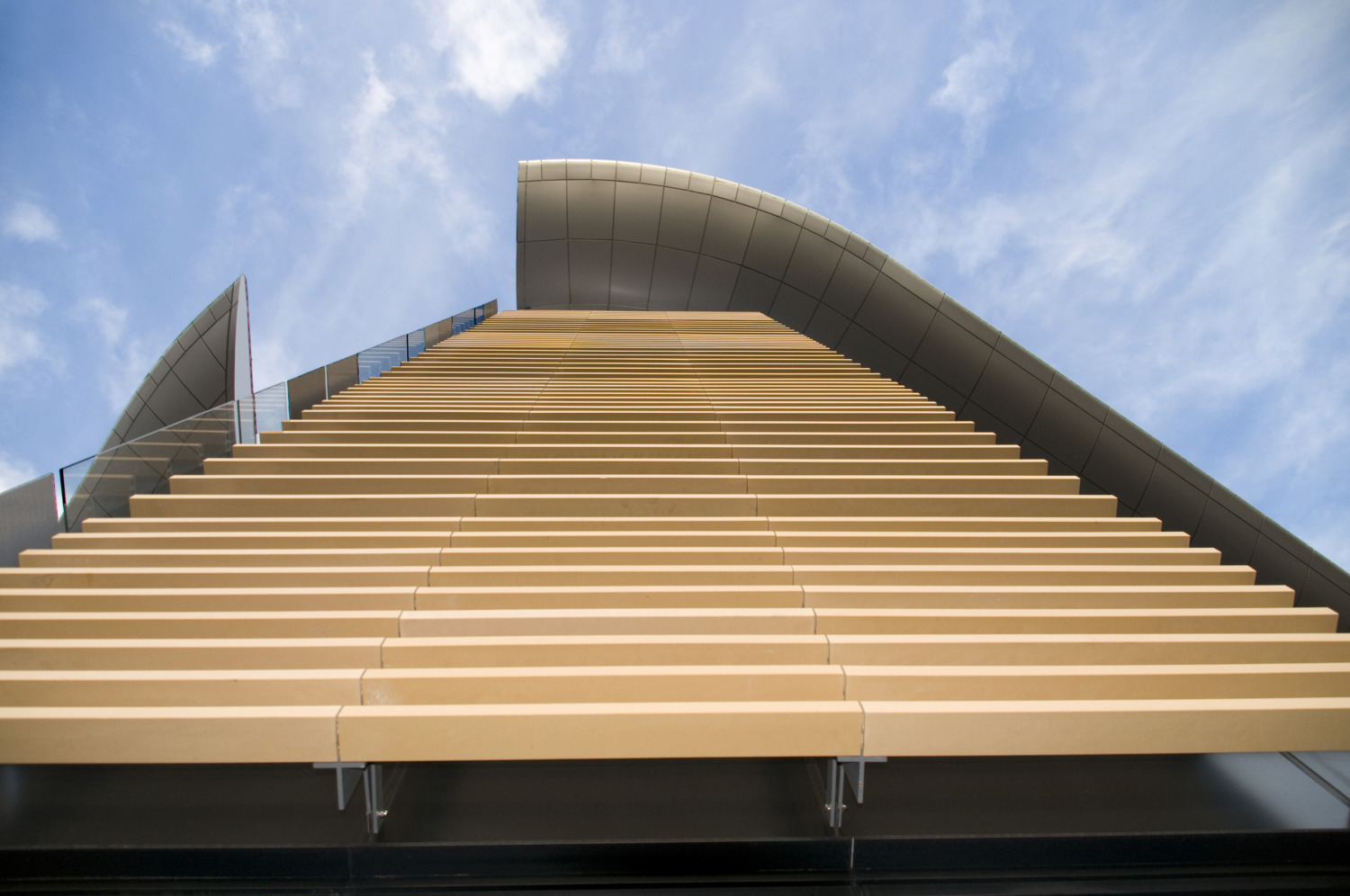
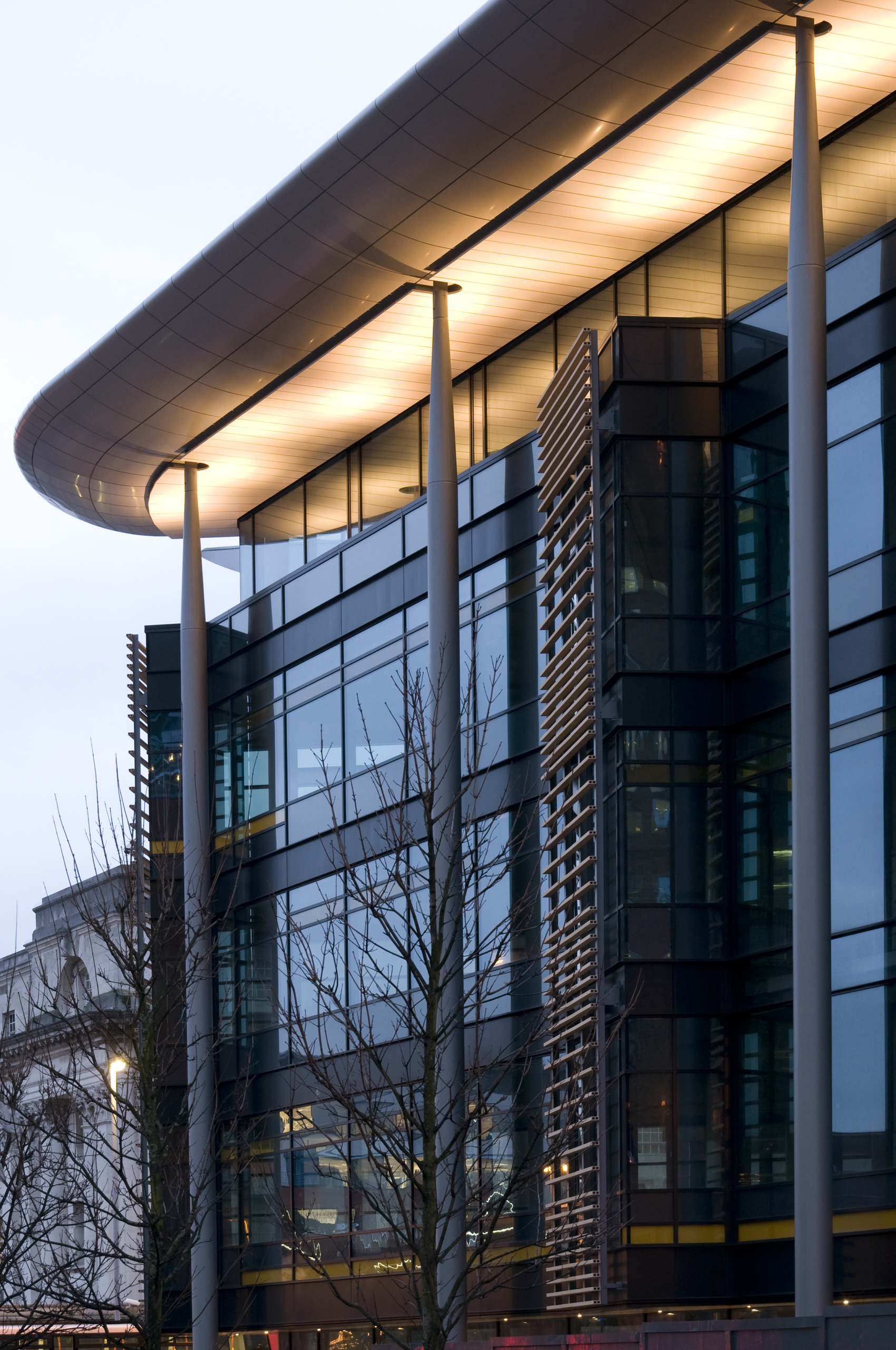




Sjølyst Arken
/i Næring /av Shiraz RafiqiSjølyst Arken
Lokasjon
Skøyen, Oslo, Norway
Størrelse
15 000m²
Oppdragsgiver
Rein Eiendom
År
2009
Kontorbygningen SjølystArken (ca. 18800 m² netto utleiebar) ligger på Skøyen i Oslo. Tomten er plassert der byens hovedvestlige tilnærming langs fjorden møter bysentrum – et sted med panoramautsikt over de pittoreske fjordøyene og byens omliggende grønne bakkelandskap.
Den komplekse naturen til tomten (over en eksisterende matbutikk og tilstøtende garasje – begge i kontinuerlig drift – og nær den travle E18-motorveien) har informert de varierende formene, uttrykkene og materialiteten til prosjektet. Som en del av en større reguleringsplan har det vært nødvendig med følsomhet i plassering og masse, med påfølgende justeringer i planløsningen for å sikre at de underliggende boligenhetene får tilgang til fjordkanten.
Mot byen følger vi gate- og gesimsnivåets høydedata for å samsvare med nabobygningene. Men når bygningen svinger for å møte landskapet, endrer fasaden seg både i retning og designkarakter – og utvikler en dobbeltkurvet form som gradvis strekker seg ut mot fjordlandskapet, som baugen på et skip – et landemerke.
Under designprosessen har vi brukt både fysiske og 3D-datamodeller for å identifisere og realisere geometrien til dette prosjektet. Disse har vært avgjørende for å generere det optimale triangulerte formatet for å konstruere det glassede omslaget for den dobbeltkurvede fasaden, samtidig som man adresserer de tekniske problemene skapt av E18-motorveien. Til tross for de store glassfasadene er bygget prosjektert til å være innenfor de nye EU-reglene for energiforbruk.
Bølgen Kulturhus
/i Næring /av Shiraz RafiqiBølgen Kulturhus
Lokasjon
Larvik, Norway
Størrelse
6 500m²
Oppdragsgiver
Larvik Kommune
År
2009
Eiendommen er sentral og byr på utfordringer: en gammel industriell kai som ligger sentralt i Larviks indre havn ved utløpet av Farriselva med den fantastiske Larviksfjorden som bakgrunn, og stedet er synlig fra store deler av byen, som troner på høydene ovenfor. Kultursenteret Bølgen er en katalysator for «Det nye Larvik – byen som dypper tærne i vannet». Konseptet er klart: Med en så eksponert beliggenhet kunne bygningen ikke ha noen bakside. Den dominerende formen består av hovedsalen og sceneløftet med trebekledning (550 seter), som er plassert midt på kaiområdet.
Dette hovedelementet bryter gjennom en tynn metallkledd takflate, noe som understreker dets letthet ettersom det støttes av slanke søyler og flettverk av stålbjelker. Høye glassvegger med delikate rammer omslutter salen og publikumsområdene og gir dem en vidstrakt utsikt over fjorden, elven og byen. I det stigende landskapet mot vest, delvis underjordisk, er tre kinoer innpasset, av støpt betong, med et kunstgalleri ovenfor som åpner seg mot byen. Utførelsen kjennetegnes av industriell enkelhet. Takflaten er av lette taklementer med deres standardiserte kledning av bølgeblikk. Detaljarbeidet med støttekonstruksjonene i stål er standardisert. Kaiens betongflate er beholdt og ført rett inn i foajeområdene som polert betong. Bygningen er ment å være holdbar, åpen og stimulerende for utøvere, enten de er amatører eller profesjonelle.
Forskningsparken
/i Næring /av Shiraz RafiqiForskningsparken
Lokasjon
Oslo, Norway
Størrelse
8 000m²
Oppdragsgiver
Forskningsparken
År
2007
Forskningsparken er et forsknings- og innovasjonssenter i Oslo. Næringkomplekset huser over 140 selskaper, med omtrent 1700 arbeidstakere som bruker bygningene hver dag. Nielstorp+ arkitekter ble først engasjert av Forskningsparken på slutten av 1980-tallet for å utvikle den første fasen, og har designet flere tillegg til senteret, med de nyeste bygningene ferdigstilt i 2022.
Bygningene ligger langs med en liten elv og er omgitt av en pent opparbeidet park. Bygningsvolumene varierer i høyde mellom fire og seks etasjer. En sentral overbygd gate fungerer som aksen i planen, der bygningene springer ut på hver side. Gaten fungerer som et midtpunkt, med sirkulasjonsområder og mulighet for dagslys dypt inn i bygningene, samtidig som den sprer eventuell oppbygging av varme. Bygningene er basert på en 2,3m x 2,3 m modul og er fleksible slik at de kan tilpasses de skiftende behovene til leietagerne. Bærekraftig design har vært en viktig faktor, og de nyeste bygningene er designet med et energiforbruksmål på 120 kWh/m² per år. Fasaden har et glassareal på 35%, med solavskjerming på sørvendte og vestvendte fasader for å forhindre overoppheting om sommeren. Vinduene er utformet for å maksimere naturlig dagslys i bygningen, mens betongplatene fungerer som termisk masse for å kjøle ned inneluften om sommeren og varme opp inneluften om vinteren.
Hallmaker
/i Næring /av Shiraz RafiqiHallmaker
Lokasjon
Kneppeskjær, Oslo
Oppdragsgiver
Oslo Harbour Authorities
År
2005
PVC-lager
Det ble opprinnelig utformet som en konkurranse for et midlertidig lager.
Den arkitektoniske ideen er basert på enkle konstruksjonsprinsipper som sammen med PVC-duken (stoffet) gir mange muligheter for bygnings- og estetiske kvaliteter. Dukken behandles som et stoff og strekkes ut som et seil. Konstruksjonen er festet med en akterstag på utsiden. En enkel todimensjonal ramme settes sammen slik at dukens form blir organisk og tredimensjonal. Hver seksjon, hvert «skip», er konstruktivt selvstøttende. Det ønskede antallet skip kan legges til for å oppnå den riktige størrelsen på hallen (lageret).
Between each “ship” it is a “break” with a vertical element of glass.
The construction is freely stretched between the facades and it is not any columns inside the hall.
The hall is lit up on the outside facade to amplify the lighting qualities of the PVC cancas.
The hall carries a maritime character and is divided up in building sections.
The hall system shall be flexible and be adapted to the users varied needs to storage.
Each section of the hall can be used together or separate.
The hall can have different climate and humidity in the different parts.
Each section can have one or more gates in the facade.
The purpose of the building is to give the traditional plastic halls an identity and innovative form that brings out the positive and dynamic with the use of PVC cancas.
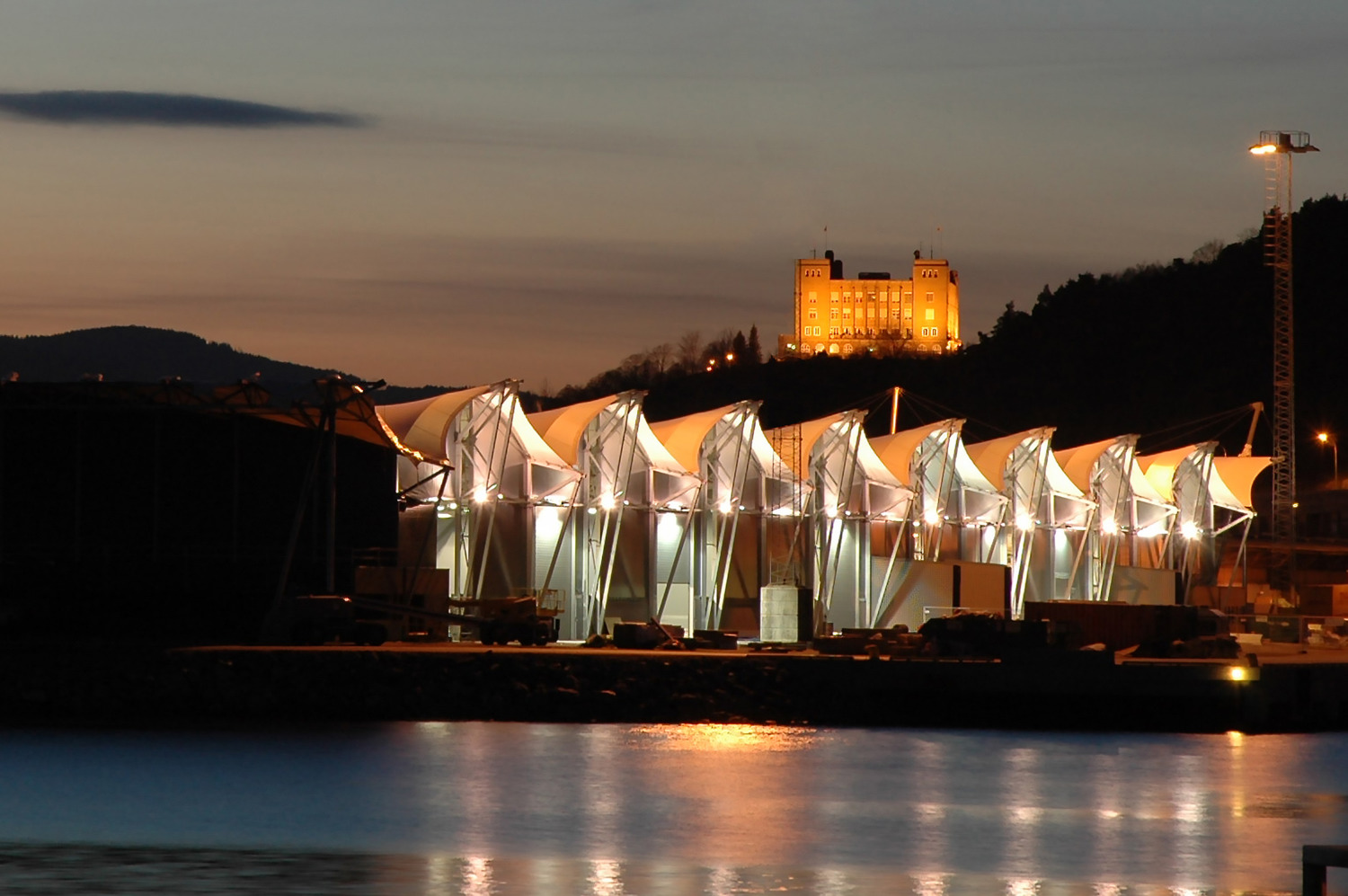
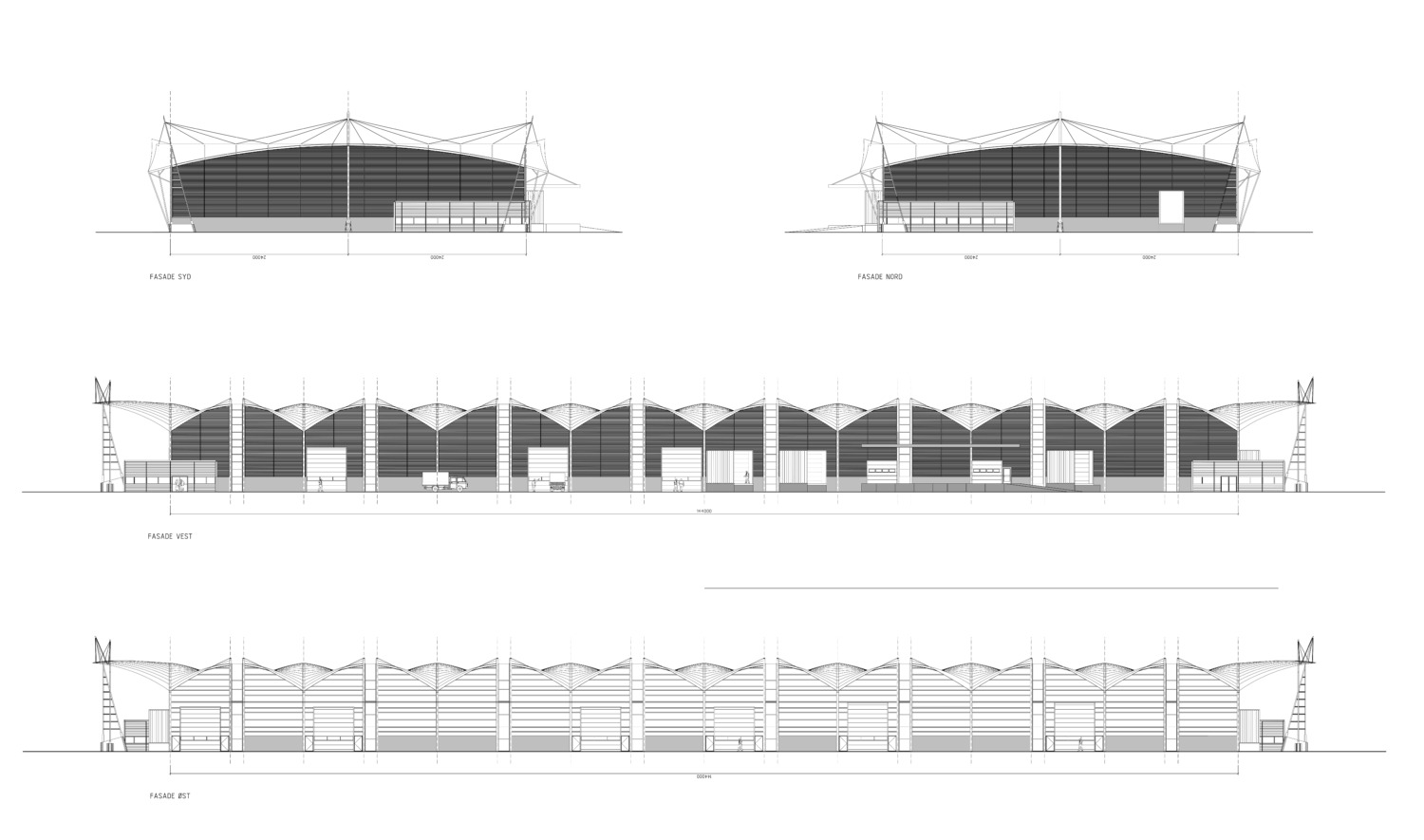
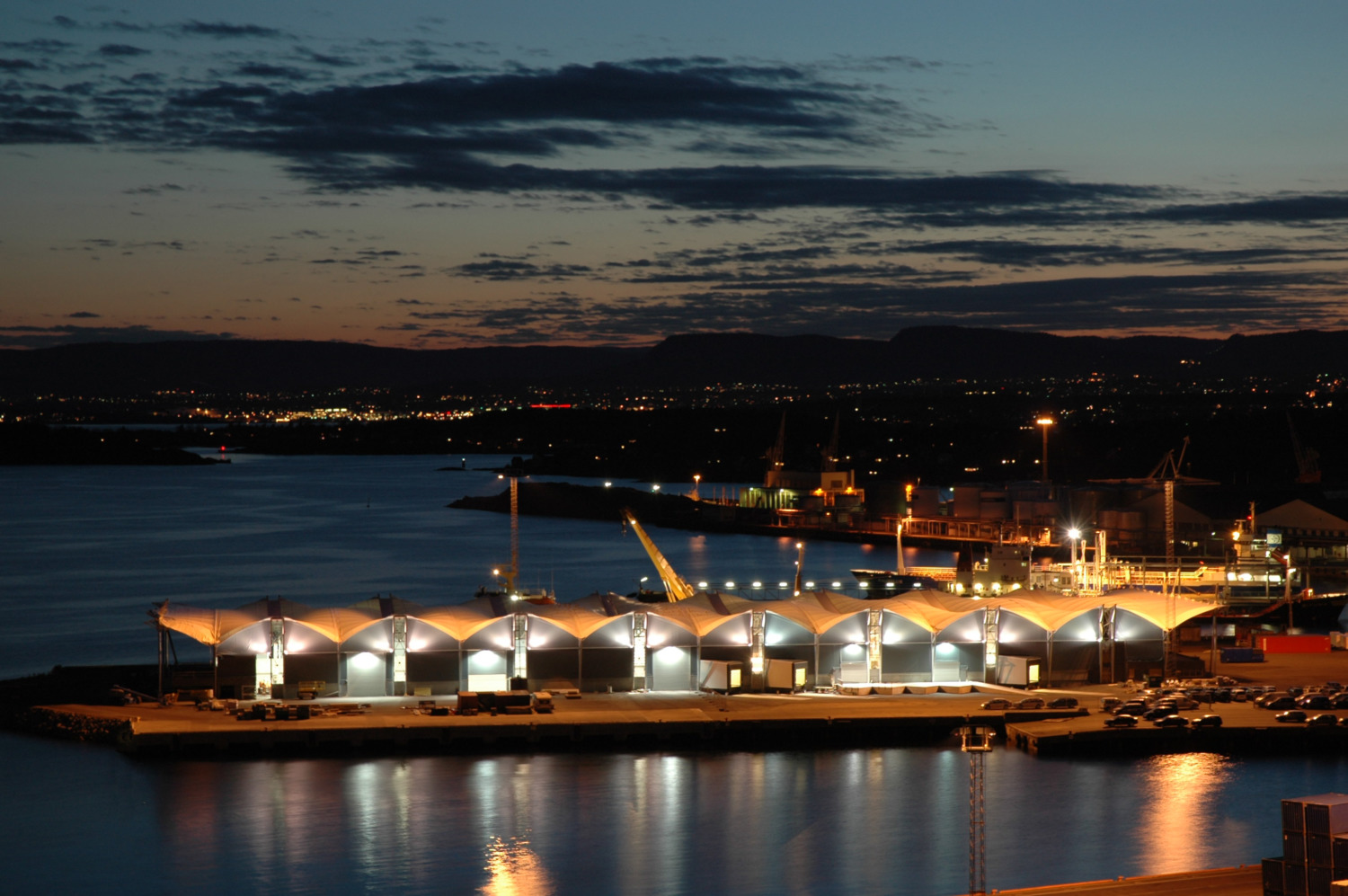

BI Campus, Nydalen
/i Næring /av Shiraz RafiqiBI Campus – Nydalen
Location
Oslo, Norway
Size
100 000m²
Recognition
FIABCI’s International Property Prize 2008, European commercial Property Awards 2010
Built
2005
Oslo’s independent business and economics school ‘BI’ have established a new unified campus in Nydalen, a regenerated commercial area in the centre of Oslo. Situated adjacent to the refurbished underground station, Campus Nydalen combinesOslo’s three previous separate business schools at Sandvika, Schous and Ekerberg under one roof. Each school originally offered different specialised courses, and it was an objective of BI to maintain each schools identity within the unified campus.
The new campus is a permeable, open and transparent building that exposes the activities in the building against the surrounding streets and public spaces. In addition to its educational function, the building acts as a meeting place, and is a focal point between the student environment and the surrounding business activities. Approximately 95,200m2 (GEA), the campus can accommodate 10-12,000 students, tutors, and administration staff. The campus is a commercial investment for BI, consisting of four buildings under one roof, three of which are occupied by the three original schools, one specializing in Executive studies, a second specializing in undergraduate courses in business marketing, and a third specializing in postgraduate and masters courses in business studies. The fourth building consists of commercially let shops, office space and Nydalen Athletic fitness centre.
Set within a regenerated urban environment north of the city centre, the campus occupies one large city block and is subdivided into four smaller blocks by two wide internal streets which slice through the campus forming a cross in plan. The building has ten levels, consisting of three levels of underground parking and a service bay, with seven levels of the student campus above ground.
Externally a limited pallet of materials has been used to create a unified composition. The different functions of the campus are highlighted to provide articulation to the spaces. The auditoria with their large coloured brick walls anchor the building into the site. The library, set within its glass box on the upper levels of the building, emphasized by the horizontal lines of the solar shading cap the building unifying it as one. The reclining northern facade facing away from the city is played down and clad in copper, whilst the remaining facades expose the asymmetrical rhythm of the stairs and structural concrete columns to provide a vertical emphasis which is further articulated by the timber-clad classrooms rooms and offices that are allowed to puncture through the facade between the columns.
Internally there is a hierarchical grid of streets providing a permeable network through the campus. This hierarchy is expressed in the use of differing materials throughout. The floors to the main streets and common areas consist of polished concrete and robust laminated timber parquet flooring. Carpet is used in the library to soften the noise, whilst vinyl is used in the remaining areas. The two main streets cut through the campus on a north-south and east-west axis, with the main entrance facing the underground station to the west. These streets are not only lines of communication, but also accommodate galleries of flexible areas of seating and break out spaces providing informal meeting points for the students. The streets step down to lower ground level where they open out creating a central room that accommodates the cafeteria. The most important communication lines are easy to read in the central room, with the main stairs and lifts placed central at the intersection of the two streets, and this is also the departure point for an escalator that runs up to the Library at the fifth floor.
It has been important to create meeting places with different characters. These consist of exposed galleries on the main street near to the cafeteria, and quieter group working places and social areas in atria within each internal building, and along the facades.
The structural grid is used to define the layout of the campus. The large auditoria, classrooms and office floor plates are placed in open areas within the wide spans of the structural columns, while stairs, riser shafts and social zones are placed around secondary atria at the centre of each of the four individual buildings. This creates a flexible building that will be possible to be adapted to suit the future needs of the campus, or converted for other uses. The building is layered, with the large auditoria spanning over two floors at ground and lower ground level, classrooms located on the first floor, offices for professional and administration staff located on the second and third floors, and the library with the best location on the fourth and fifth floors offering a panoramic view over the city of Oslo towards the fjord. Additionally each building has undergraduate, masters and corporate study areas, each with their own area and meting place located on first floor level in the atria area.
The vertical campus is open seven days a week, and is continuously animated by the students and staff that can be seen occupying the meeting and breakout spaces, or in motion on the streets, stairs, bridges, escalator and arcades as they make their way to and from their different activities.

BUP Levanger Sykehus
/i Næring /av Shiraz RafiqiBUP Levanger Hospital
Location
Innherred, Levanger
Size
13 000m²
Built
2004
Location: Levanger, Innherred
Size: New hospital building 9.500 m², rehabilitation of existing hospital 3.300 m²
Project duration: – 2004
Recognition: 1. prize invited competition 1997
The bed ward covers two floors. The section of the building facing Kirkegaten is sheltered − the emergency unit is on the ground floor, with the longer-term unit on the floor above. A joint entrance for day-patients and visitors is on Bakkegata and on Kirkegata there is a service entrance for long-term patients, which also opens to the reception of a restricted unit. The ward office is centrally located on both floors to facilitate corridor supervision. All the rooms accessed by patients (patient apartments, kitchen, dining room and TV/dayroom) face the courtyard. Personnel and treatment facilities face Kirkegatan as does a large activity room for patients on the second floor. Connecting to the service entrance are the garage, hobby room/storeroom, a workshop and an outdoor “tinkering” space. Efforts have been made to prevent an “institutional” atmosphere through use of materials, colours, light and space. Key to this is the utilisation of an open floor plan – physically, visually and evocatively. The offices and common rooms and most of the treatment rooms have thus been adorned with glass walls facing the corridor. Interior venetian blinds can provide privacy when it is needed in these rooms.
Fritzøe Brygge
/i Næring /av Shiraz RafiqiOslo Atrium
/i Næring /av Shiraz RafiqiOslo Atrium
Lokasjon
Oslo
Størrelse
28 000m²
År
2003
Oslo Atrium er formet som et bykvartal og åpner seg på ulike måter på alle sider, mot de sterkt kontrasterende utemiljøene som for øyeblikket preger området. Bygningens ytre er utformet som en klar og solid kube, der ulike utskjæringer og åpninger gir kontakt med interiøret.
Mot hovedinngangen, Nyland Allé, tilbyr kvartalet en sjenerøs åpenhet til det terrasserte interiøret. En nøktern tilnærming ble bevisst uttrykt her pga de planlagte spektakulære kulturbygningene ved Bjørvika. I kontrast til bygningens strenge, urbane eksteriør, er interiøret utformet rundt et rikt, monumentalt, konisk sentralt rom, som forbinder kontorflater med gallerier og gangbroer. Den sørvendte, frittstående bygningskroppen blir fremhevet som en paviljongbygning løftet på høye søyler, slik at gårdsplassen kan luftes ut på toppen og bunnen mot Nyland Allé. Metall, glass og varm travertin utgjør en vennlig hilsen til den gamle Oslo Sentralstasjonen og nabobygningene mot vest.
Smestaddammen
/i Næring /av Shiraz RafiqiSmestaddammen
Location
Oslo, Norway
Size
28.000m²
Client
Linstow Eiendom
Built
2000
The buildings command fine, intimate views eastwards into the Smestaddammen lake and its associated parkland, as well as panoramic views southwards over the distant Oslo Fjord.
Landscape
The site was a neglected and inaccessible nature reserve, marred by overgrown vegetation and a dried-up lake as the dominant feature.
The development has restored the Smestaddammen lake and parkland to its natural beauty.
The new offices are set back from the lake and are kept down to 4 storeys to make a balanced and harmonious fusion between nature and buildings.
Buildings
Each building is made up to office wings gathered around a glass-covered atrium.
Building A opens up towards the lake and parkland in the east through a glazed façade.
An exposed concrete grid in front of the glazing provides a stimulating play of light and shade.
Building C is oriented towards the panoramic views in the south through the glass enclosure of the atrium.
Building B with its curved facades of glass and metal forms the ?hub? of the development and conveys the directional changes in the development structure.
Project team: Project responsible: Niels A. Torp
Team leader: Dag Leyre Olsen
Collaborators: Harald Heie, Halvor Eliassen, Joyce Battersby, Geir Vågen, Anne Merete Knap, Kari Anne Aukan
Presented in: Byggenytt nr. 10 / 2000
Glass & Fasade nr. 4 / 2000
World Architecture 24. March 2001
NIELSTORP+ ARKITEKTER AS
Vi har lang tradisjon for å lage human arkitektur. Mennesket er i sentrum når vi designer hus og bydeler. Husene våre brytes ned i skala, til en målestokk som gjør at folk føler seg hjemme i, og føler tilhørighet til sine omgivelser.
SNARVEIER
KONTAKT
Telefon: +47 23 36 68 00
E-post: firmapost@nielstorp.no
Besøksadresse: Industrigata 59, 0357 Oslo
Postadresse: P.boks 5387 Majorstua, 0304 Oslo
Org.no: 922 748 705
Copyright © 1984-2023 NIELSTORP+ arkitekter AS – Utviklet av Benchmark


